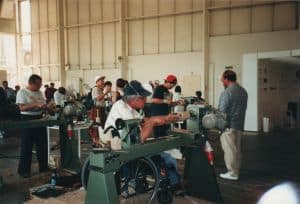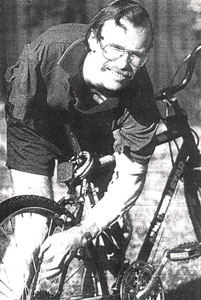Dr Philip Deschamp AAPS (Associate of the Australian Photographic Society)
A presentation made by slide show to Abilympics in Japan in 2008
I apologize that I can not be here personally to speak with you. I am 65 and have had quadriplegia for more than 40 years. I was just not well enough to come to Japan. I am sad because I would love to see your lovely country.
Before the Abilympics in Prague in 2000 I was working too hard. In addition to my work as a researcher, I also chaired several disability related committees including the Disability Services Commission committee on Monitoring Standards of funded services. My life consisted of attending meetings and writing reports.
The late John Fisher (the leader of Abilympics in Australia) invited me to be part of the team for the Prague Abilympics. When we looked to see what skill category I could enter we were a bit puzzled as there was no competition for report writing. John suggested that I enter the Photography section because as he said “Anyone can take photographs!”.
I enjoyed the Abilympics experience and met many very interesting people. As it turned out, even though I cannot use my fingers at all, I enjoyed photography and decided to learn more about it when I returned to Australia.
I bought a good camera and began to learn about the theory and practice of fine art photography. At first I was happy just to make a photo. Then I joined a camera club and began to enter competitions. After a while I have begun entering State and then National and International competitions.
After winning many National and State awards and being awarded the Associate of the Australian Photographic Society for my photography I wanted to identify a more purposeful direction for my photography. After a lot of thought I have began to specialize in photos that show an uplifting image of people with disabilities.
This has been a truly exciting experience. Several other photographers also accepted the challenge of this topic and we have photographed people with a disability who are successful artists as well as wheelchair athletics, electric wheelchair soccer, electric wheelchair hockey, Boccia for people with cerebral palsy, archery for people with an intellectual handicap, surfing for people with disabilities, and many other activities.
We give copies of the photographs to the people and organizations involved and are happy for them to be used as posters or in instructional materials and newsletters. Some of my fellow photographers had no experience with people with disability and for them it has been a strong learning experience.
I have cut back my workload so that I can give more time to photography. I write less reports and try to take more photographs that show people with disability in a positive way. This is a real challenge and one I enjoy very much. I hope some of these photos will help people with disabilities to see themselves as successful athletes and artists and as important members of our society.
In all cases such as this we are happy to provide copies of the photographs at no charge to ensure that we are not seen as commercial photographers.
It has been much more rewarding than taking award-winning photographs that end up sitting in a cupboard. These photographs are now framed on people’s walls and in their family albums. The experience has shifted me away from writing reports towards meeting a wide range of people and seeing their amazing achievements. This would not have happened had I not gone to Abilympics in Prague.





